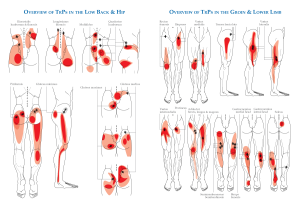5 Instances Where Spinal Fusion Is The Right Treatment

Category: | Author:
Spinal fusion is a procedure that fuses two or more adjacent vertebrae to one another to help limit mobility in the area. It’s rarely the first option when working to address a spinal issue, but for the right patient, it can be exactly what they need to get back to a full and rewarding life. In today’s blog, we take a closer look at five instances where spinal fusion may be the right course of treatment.
When Is Spinal Fusion Recommended?
To learn if spinal fusion may be right for your specific situation, we recommend that you speak with a specialist who can view your spine in person. With that said, here are five situations where spinal fusion may be the recommended form of treatment.
- Conservative Treatments Have Failed – Spinal fusion is a major undertaking for your spine and your whole body, so it’s incredibly rare for it to be the first course of recommended treatment. Your doctor will likely want you to pursue weeks or months of different conservative techniques to see if they can provide enough symptom relief to avoid the need for surgery. The vast majority of patients who are candidates for spinal fusion have tried unsuccessfully to treat their spinal issues with non-operative techniques.
- Spinal Mobility Isn’t A Priority – As we talked about in our spinal disc replacement tends to be a better option for athletes and patients looking for a surgical correction that will allow them to maintain more normal range of motion in their spine. Spinal fusion works by eliminating movement at a section of your spine, which is fine for many patients and a potential problem for others. If you need to maintain as much spinal flexibility as possible, a different operation may be recommended.
- Spinal Movement Is The Underlying Issue – Building off the last point, spinal fusion is typically recommended for patients whose underlying issue is caused by spinal hypermobility. For example, excessive movement could cause problems for a herniated or degenerative disc, or for patients dealing with painful synovial cysts. When excessive movement is contributing to your pain, spinal fusion can help to permanently limit this uncomfortable movement.
- You Have A Curvature Disorder – A spinal fusion may be the best way to put a stop to a curvature disorder that is causing alignment problems for your spine. Patients dealing with scoliosis, kyphosis or lordosis who can’t stop the progression of their condition with conservative techniques may be an ideal candidate for a fusion procedure.
- You’re Generally Healthy – Finally, since spinal fusion is a major undertaking for your body, it is only recommended when the surgeon feels like the patient is healthy enough to make a strong recovery following the procedure. The ideal patient will be a healthy non-smoker without underlying conditions like diabetes or hypertension. That’s not to say that any of those conditions will automatically exclude you from being eligible for surgery, but your doctor will want you to become the healthiest version of yourself prior to your operation, and if they think the procedure is too risky because of your health, they may move forward with a different care plan.
For more information about spinal fusion or caring for a different back issue, reach out to Dr. Sinicropi and the team at The Midwest Spine & Brain Institute today at (651) 430-3800.
Related




